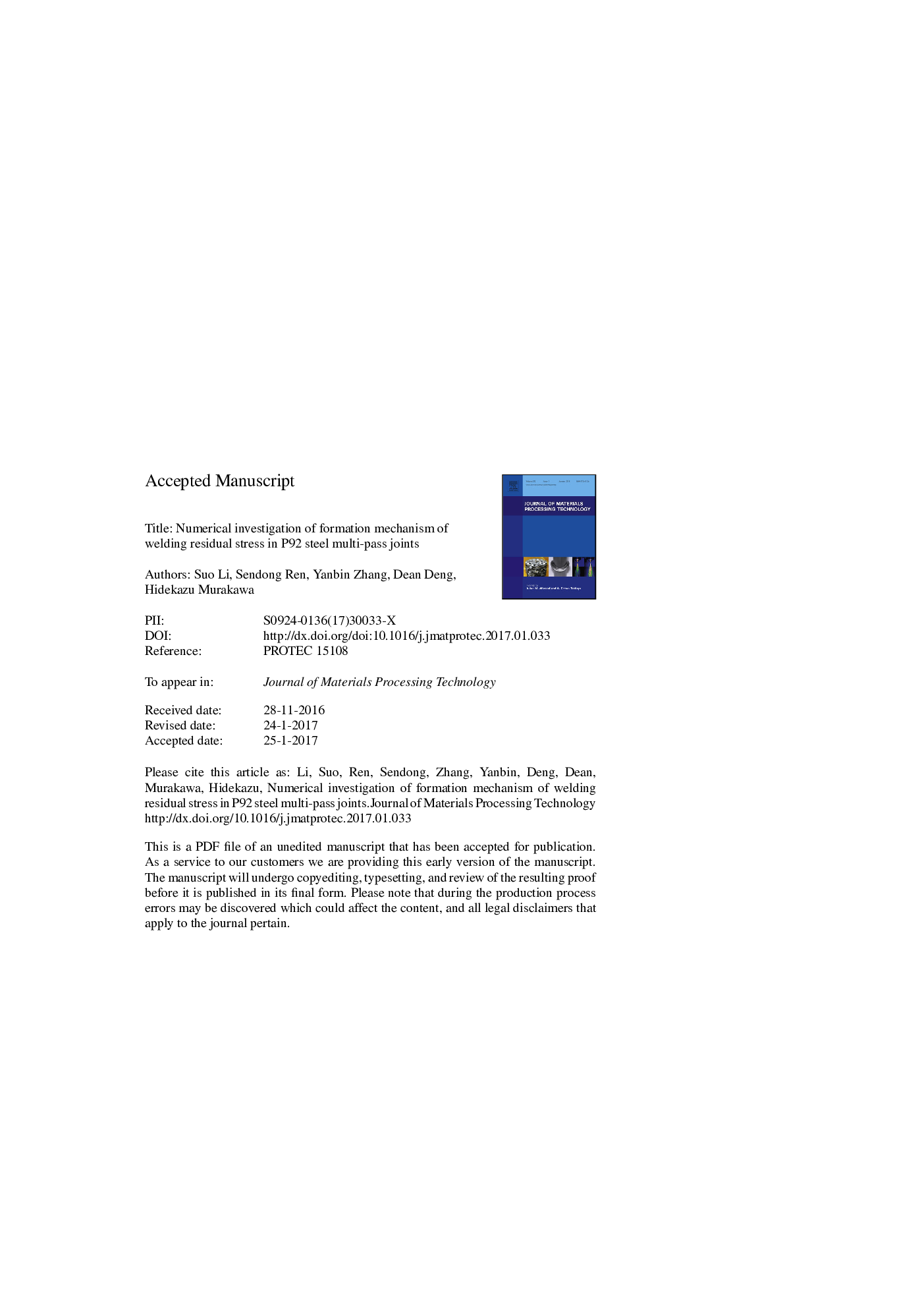| Article ID | Journal | Published Year | Pages | File Type |
|---|---|---|---|---|
| 5017895 | Journal of Materials Processing Technology | 2017 | 55 Pages |
Abstract
Three plate joints, namely, single-pass weld, double-pass weld, and four-pass weld were fabricated using P92 steel. The hole-drilling strain-gauge method and X-ray diffraction technique were employed to measure the welding residual stresses. Optical microscope and Vickers hardness tester were used to characterize the micro-structure and hardness of these joints, respectively. A thermal-metallurgical-mechanical finite element method (FEM) based on SYSWELD software was developed to simulate welding residual stress in P92 steel joints. Using the developed computational approach, the welding residual stress profiles in single-pass, double-pass and four-pass welded joints were calculated. The effectiveness of the developed computational approach was verified by the experimental measurements. The longitudinal stress vs. temperature evolution in double-pass welded joint was also examined. Numerical experiments of Satoh test were performed to study the influence of solid-state phase transformation, peak temperature and re-heating on the evolution of residual stresses. The solid-state phase transformation has a significant influence on the formation of welding residual stress, and the peak temperature of final thermal cycle can determine the magnitude of final residual stress.
Related Topics
Physical Sciences and Engineering
Engineering
Industrial and Manufacturing Engineering
Authors
Suo Li, Sendong Ren, Yanbin Zhang, Dean Deng, Hidekazu Murakawa,
